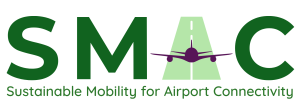Home, Mobility, Research project
The research project Integrated Modelingand Evaluation of Mobility Measures for Strategic Planning Processesin Villach, ViMoPlan for short, funded by the FFG, was launched last week with a kick-off.
In this project, a traffic model is being developed for the climate pioneer city of Villach that combines an existing aggregated and an existing agent-based traffic model. This innovative approach makes it possible to respond to the different planning needs of cities. Using the coupled model, different spatial levels such as neighborhoods, cities or entire regions can be evaluated in terms of traffic. In addition to the methodical approach of the planning process, this project also supports the increase in the degree of digitalization in Villach, as data collection and backup will be standardized in the course of the project. During project implementation, it will be worked out which data is required for specific purposes and how this can be collected by cities in a cost-saving manner.
In the long term, such modeling can support decisions on various measures. The use of various resources at planning and administrative level can also be organized better and more sustainably. One result of this research project will be a guideline for other municipalities and cities with similar tasks, so that future traffic studies can be carried out more efficiently.
PLANUM is looking forward to the start of this exciting project and to working together with the City of Villach, Joanneum Research, the Bernard Group and VKFG Villacher Klimafit GmbH.
Queries: DI Benedict Winkler, winkler@planum.eu

 Our project page on LinkedIn provides information on the current project status and can be accessed via the following link:
Our project page on LinkedIn provides information on the current project status and can be accessed via the following link: